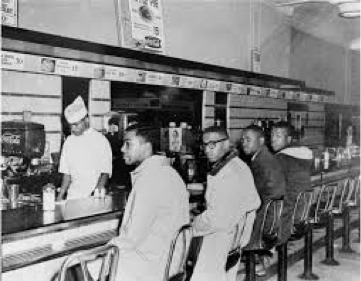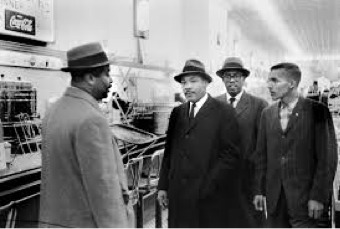Sign up for FlowVella
Sign up with FacebookAlready have an account? Sign in now
By registering you are agreeing to our
Terms of Service
Loading Flow

On February 1, four young African-American men, students at North Carolina Agriculture and Technical College, go to a Woolworth in Greensboro, North Carolina, and sit down at a whites-only lunch counter. They order coffee. Despite being denied service, they sit silently and politely at the lunch counter until closing time. Their action marks the start of the Greensboro sit-ins, which sparks similar protests all over the South.On Oct. 19, Martin Luther King Jr, joins a student sit in at a whites only restaurant inside of an Atlanta department store. He is arrested along with 51 other protesters on the charge of trespassing. On probation for driving without a valid Georgia license (he had an Alabama license), a Dekalb County judge sentences MLK to four months in prison doing hard labor. Presidential candidate John F. Kennedy phones King's wife, Coretta, to offer encouragement while his brother, Robert Kennedy, convinces the judge to release King on bail. This phone call convinces many African-Americans to support the Democratic ticket

President Kennedy issued Executive Order 10925, prohibiting discrimination in federal government hiring on the basis of race, religion or national origin and establishing The President's Committee on Equal Employment Opportunity. They were immediately directed to scrutinize and study employment practices of the United States government and to consider and recommend additional affirmative steps for executive departments and agencies.
Take a Stand
African Americans taking a stand for their rights at a Greensboro Sit In

MLK in Greensboro